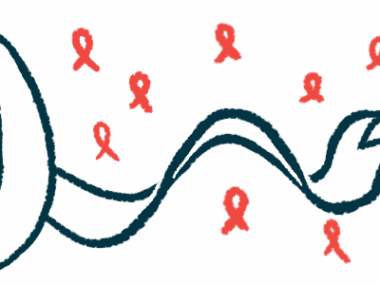Gaucher disease diagnosis speeds up, but complications still common
Study in France finds some patients develop cancer, bone problems, Parkinson's
Written by |

The time from symptom onset to receiving a diagnosis of Gaucher disease has significantly decreased over the last decades, from a median of 5.4 years before 2000 to less than one year after 2020, a study in France has found.
Still, researchers noted that, while most patients received standard Gaucher disease treatments after they became widely available, many still faced serious complications, including bone problems, cancer, and Parkinson’s disease.
The study, “Epidemiology of Gaucher Disease in France: Trends in Incidence, Mortality, Management, and Complications Over Three Decades,” was published in the Journal of Inherited Metabolic Disease. Several of the study’s authors received fees related to travel, speaking, and consulting.
Gaucher disease diagnosis on decline in recent years
Gaucher disease is caused by mutations in a gene called GBA1, which results in a deficiency of glucocerebrosidase, an enzyme responsible for breaking down fatty molecules. Without this enzyme, fatty molecules abnormally accumulate inside specific organs and tissues, which ultimately causes Gaucher disease symptoms.
Over the past four decades, the introduction of noninvasive diagnostic tests and the approval of several Gaucher disease treatments has led to dramatic shifts in diagnosis, management, and long-term outcomes for people with the disease.
Now, a group of researchers wanted to learn more about how that evolution looked in France. The team drew on data from the French Gaucher Disease Registry, which is funded in part by Sanofi and Takeda Pharmaceuticals and includes all patients diagnosed in the country since 1980.
Between 1980 and 2024, a total of 706 people were diagnosed with Gaucher disease in France. Most (553 patients) had type 1 Gaucher disease, 78 had type 2, 51 had type 3, and 44 had no known type.
The number of new Gaucher cases increased rapidly from 1970 to the early 1980s, and remained generally stable until the early 2010s. However, the incidence has been decreasing in more recent years, with fewer new cases being diagnosed every year.
“In the last decade, we have observed a decrease in the number of diagnosed cases per year and thus in the incidence. This can have several explanations, including a ‘saturation effect,’ with an initial improvement in the knowledge of the clinical signs of the disease, which allowed the initial detection of all cases that were previously undiagnosed,” the researchers wrote.
Advances made in diagnostic approaches
By 2024, 447 of patients were still alive, equating to an overall Gaucher prevalence of 0.66 per 100,000 inhabitants. A total of 208 patients included in the registry had died. These included 18.8% of those with type 1 disease, whose median age of death was 68, all of those with type 2, who died at a median age of 1, and one-third of those with Gaucher type 3, whose median age at death was 7.
When looking solely at patients who were still alive, the median age at diagnosis across all types was 21 years. Patients with type 1 were typically diagnosed at a median age of 23, while those with type 3 were diagnosed much earlier, at around 2 years old.
Notably, diagnostic delays have been reduced significantly over time. The median time from first symptoms to diagnosis was 5.4 years before 2000, which dropped to 2.7 years between 2000 and 2010, and to 0.8 years (9.6 months) after 2020.
Diagnostic approaches have similarly evolved, with enzyme activity testing becoming the main tool to establish a diagnosis. In turn, the use of bone marrow biopsies have declined significantly, and biopsies of the spleen, liver, and bone were no longer being done in 2024.
Our study enabled us to update the epidemiology of [Gaucher disease] in France, while noting an improvement in knowledge of the disease, resulting in less invasive and more rapid diagnoses.
Treatment data were available for 316 patients who were alive in 2024. Among them, 56% were receiving Cerezyme (imiglucerase), 26% were on the oral medication Cerdelga (eliglustat), and 18% were being treated with VPRIV (velaglucerase alfa). The use of Cerdelga increased after its introduction in 2015, and about 14.6% of patients who received this medication started it as their first-line treatment.
Splenectomy, or surgical removal of the spleen, had been performed in 16% of the patients. More than half of these surgeries (53%) occurred before the diagnosis of Gaucher disease. The rate of splenectomy has declined notably since enzyme replacement therapy became widely available.
Long-term complications were assessed in 210 patients with complete follow-up data. Bone-related issues, such as fractures and bone tissue death due to a lack of blood supply, were the most frequent, affecting 42% of patients. Notably, 33.7% of patients experienced bone events even after starting treatment.
Cancer developed in 9% of the patients, with breast cancer, multiple myeloma, and lymphomas being the most common. Additionally, 3% developed Parkinson’s, all of whom had type 1 Gaucher disease. On average, Parkinson’s was diagnosed 27 years after Gaucher disease.
“Our study enabled us to update the epidemiology of [Gaucher disease] in France, while noting an improvement in knowledge of the disease, resulting in less invasive and more rapid diagnoses,” the researchers concluded.





